Extract from The Guardian
• See the names of all defenders who have died so far this year here. Read more from the project here.
Activists call for justice in the case of Honduran indigenous environmentalist Berta Cáceres, who was killed last year. Photograph: Marvin Recinos/AFP/Getty Images
Jonathan Watts and John Vidal
Thursday 13 July 2017 21.00 AEST Last modified on Thursday 13 July 2017 23.43 AEST
Last year was the most perilous ever for people defending their community’s land, natural resources or wildlife, with new research showing that environmental defenders are being killed at the rate of almost four a week across the world.
Two hundred environmental activists, wildlife rangers and indigenous leaders trying to protect their land were killed in 2016, according to the watchdog group Global Witness – more than double the number killed five years ago.
And the frequency of killings is only increasing as 2017 ticks by, according to data provided exclusively to the Guardian, with 98 killings identified in the first five months of this year.
John Knox, UN special rapporteur on human rights and the environment, said: “Human rights are being jettisoned as a culture of impunity is developing.
“There is now an overwhelming incentive to wreck the environment for economic reasons. The people most at risk are people who are already marginalised and excluded from politics and judicial redress, and are dependent on the environment. The countries do not respect the rule of law. Everywhere in the world, defenders are facing threats.
“There is an epidemic now, a culture of impunity, a sense that anyone can kill environmental defenders without repercussions, eliminate anyone who stands in the way. It [comes from] mining, agribusiness, illegal logging and dam building.”
Mexican indigenous leader and opponent of illegal logging Isidro Baldenegro López was killed in January.
In May, farmers in Brazil’s Maranhão state attacked an indigenous settlement, hacking with machetes at the hands of their victims in another land conflict that left more than a dozen in hospital. There have also been killings of environmental defenders and attacks on others in Colombia, Honduras, Mexico and many other countries since the new year.
Isidro Baldenegro López (foreground) at home in the village of Coloradas de la Virgen, Chihuahua, Mexico, where he opposed illegal logging operations. Photograph: Courtesy of the Goldman Environmental Prize
Most environmental defenders die in remote forests or villages affected by mining, dams, illegal logging, and agribusiness. Many of the killers are reportedly hired by corporations or state forces. Very few are ever arrested or identified.
This is why the Guardian is today launching a project, in collaboration with Global Witness, to attempt to record the deaths of everyone who dies over the next year in defence of the environment. We will be reporting from the world’s last wildernesses, as well as from the most industrialised countries on the planet, on the work of environmental defenders and the assaults upon them.
Billy Kyte, campaign leader on this issue at Global Witness, said that the killings that make the list are just the tip of an epidemic of violence.
“Communities that take a stand against environmental destruction are now in the firing line of companies’ private security guards, state forces and contract killers,” he said. “For every land and environmental defender who is killed, many more are threatened with death, eviction and destruction of their resources.
“These are not isolated incidents. They are symptomatic of a systematic assault on remote and indigenous communities by state and corporate actors.”
Around the world, the number and intensity of environmental conflicts is growing, say researchers. An EU-funded atlas of environmental conflict academics at 23 universities has identified more than 2,000, ranging over water, land, pollution, evictions and mining.
Greenpeace activists block a 135km illegal road, in the Altamira national forest, Brazil. The road cuts directly through the forest and is used for illegal logging operations and deforestation inside the protected area. Photograph: Daniel Beltrá/Greenpeace
“These are just the reported ones. There could be three times as many. There is much more violence now,” said Cass business school researcher Bobby Banerjee who has studied resistance to global development projects for 15 years. “The conflicts are happening worldwide now because of globalisation. Capitalism is violent and global corporations are looking to poor countries for access to land and resources. Poor countries are more corruptible and have weaker law enforcement. Companies and governments now work together to kill people,” he said.
The 2016 Global Witness data shows that the industries at the heart of conflict were mining and oil, which were linked to 33 killings. Logging was in second place worldwide – with 23 deaths, up from 15 the previous year – followed by agriculture. That ranking could change. In the first five months of this year, the most striking trend is that for the first time agribusiness is rivalling mining as the deadliest sector, with 22 deaths worldwide – just one short of the total for the whole of last year.
The situation in Colombia in particular has gone from bad to worse in 2017. Brazil and the Philippines are also on course to hit new highs and indigenous groups continue to suffer disproportionately.
In terms of country rankings, in 2016 Brazil was once again the deadliest country in absolute terms with 49 killings, many of them in the Amazon rainforest. Timber production was implicated in 16 of those cases as the country’s deforestation rate surged by 29%.
The Amazon rain forest bordered by deforested land. Photograph: Paulo Whitaker/Reuters
More broadly, Latin America remained the most dangerous region for anyone wanting to protect rivers, forests, mountains and oceans, accounting for 60 of the global total of killings of environmental defenders even though it is home to less than a tenth of the world’s population.
With major economic interests at stake, state security forces were behind at least 43 killings globally – 33 by the police and 10 by the military – while private actors such as security guards and hitmen were responsible for 52 deaths.
The human cost of all this is terrible, said Laura Cáceres, one of the daughters of Honduran indigenous Lenca leader Berta Cáceres, who was murdered in 2016 after resisting the Agua Zarca hydroelectric dam on the Gualcarque river.
Now in exile following death threats, Cáceres was recently in Oxford, in the UK, at a conference organised by Not1More (N1M), a group founded in 2016 in response to the violence facing environmental defenders.
“Berta Cáceres was a hindrance to the system,” she said. “[Honduras] is so battered; 30% of the land has been granted to transnational corporations. Companies are taking over ancestral territories. Forests are being privatised. My mother was passionate about her land, her roots, and she was horrified by the sinister and violent forms with which imperialism acts.”
People protest against violence and insecurity and demand justice
over the murder of Honduran indigenous environmental activist, Berta
Cáceres. Photograph: Orlando Sierra/AFP/Getty Images
Defenders frequently say they get no help from government, indeed corrupt governments are often implicated in the violence.
One west African anti-illegal logging activist, who asked not to named for fear of reprisals, said: “I am subject to pressure and threats. Millions [of dollars] are coming out of the forests and yet people have nothing – no schools, no health centres. Money is not going to the state but to private people. We are working without resources.
“My family has been threatened with death. We have had anonymous calls. I keep working with the help of my colleagues. We gave information to the UN, and asked for help. We got nowhere. We could be killed any moment.”
Wildlife defenders are also being increasingly targeted. More than 800 park rangers have been killed by commercial poachers and armed militia groups in the past 10 years, according to US group Global Conservation.
“Rangers face high levels of violence and are being [killed] at an alarming pace,” says Sean Willmore, president of the International Ranger Federation. “Almost 60% of those killed in 2016 were from Asia, with the majority from India.”
US writer Olesia Plokhii, who witnessed the murder of Cambodian illegal logging activist Chut Wutty in 2012, wrote in the Ecologist last month: “Wutty ran his own environmental organisation, had Western financial backers, the support of high-ranking Cambodian military officials, hundreds of local supporters who watched out for him and tools – multiple cell phones, a GPS tracker. He was still murdered.
Cambodian environmental activist Chut Wutty who was killed in 2012. Photograph: CCHR/EPA
“Much less organised and prepared defenders, people who might be forced unexpectedly into protecting their lands due to evictions or enormous infrastructure developments, are up against the same violence.”
The 2016 Global Witness report also notes that environmental protest is being clamped down on across the board – even in the richest countries – citing the case of the Standing Rock campaign against the construction of an oil pipeline under Lake Oahe in the US, and noting North Dakota legislators only narrowly defeated a bill that would have allowed drivers to run over and kill protesters without being jailed.
N1M co-founder Fran Lambrick told the Guardian: “Frontline environmental defenders are critical in fighting climate change, protecting our natural resources and upholding human rights and cultural identity. Yet they face violent reprisals, threats and criminalisation.”
“We are defenders of life,” said Laura Cáceres. “We are willing to do anything to allow life to continue. We don’t want to lose our lives and lose our mamas and families. But we assume that risk. If they can murder someone with high recognition like my mother Berta, then they can murder anyone.”
• You can read more about the Guardian and Global Witness’ year-long collaboration, The defenders, here. If you have ideas for this project, or if you have specialist knowledge and would like to contribute, please email defenders@theguardian.com
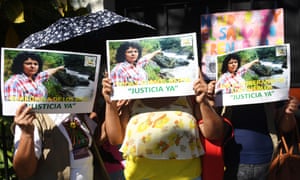
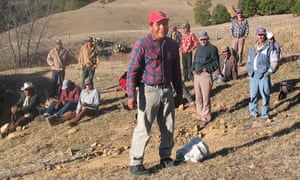
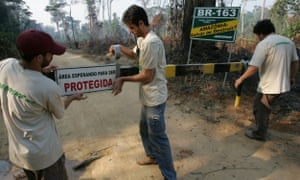
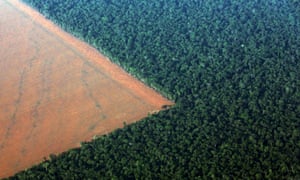

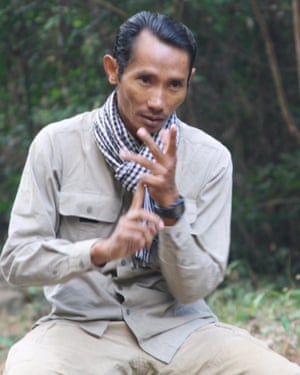
No comments:
Post a Comment